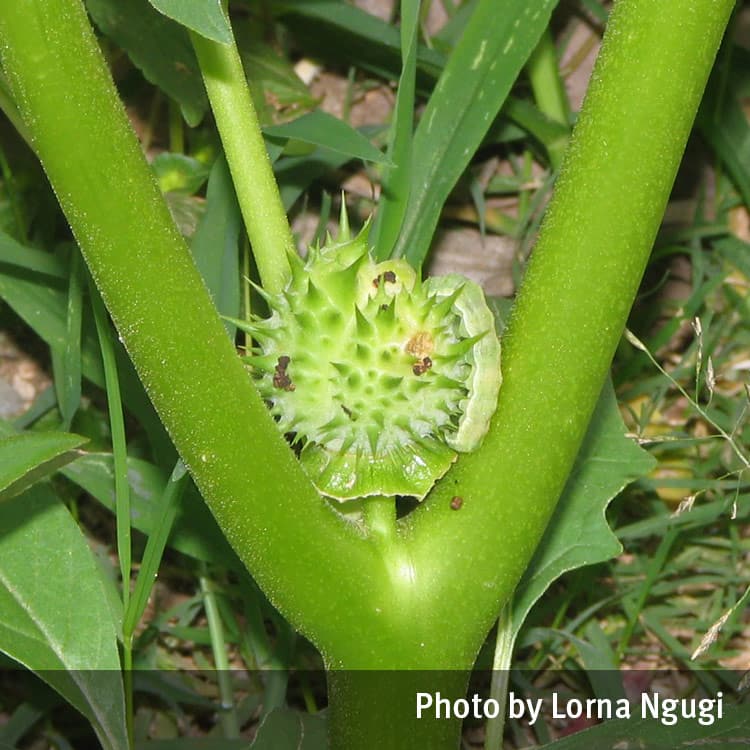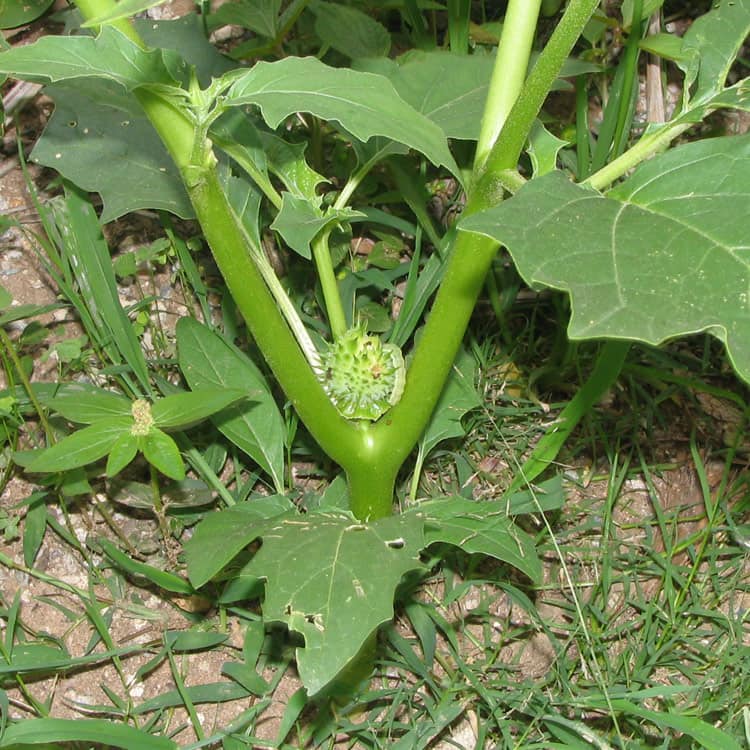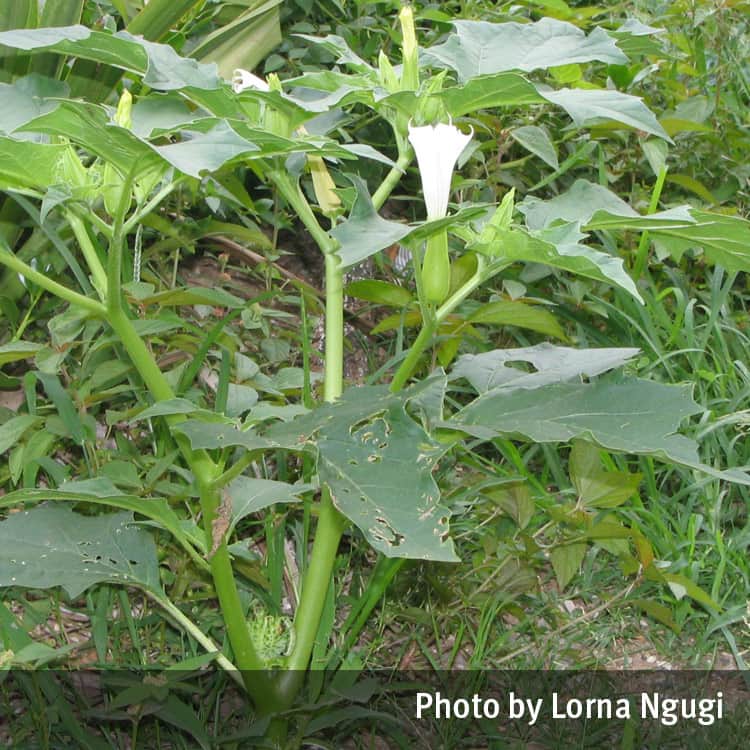Warning
Seek medical assistance for all ingestions and eye exposures.
Description
A robust annual herb up to 1.2m tall, but often much smaller. A weed of roadsides, waste places, disturbed areas and cultivation.
The trumpet shaped flowers are white to pale lavender, 6-8.5cm long with 5 lobes ending in a fine point. Flowers are sweetly perfumed.
Alternate leaves are dark green, 7-17cm long and 4-11cm wide, coarsely or broadly toothed.
Toxicity
Symptoms
All parts of the plant are toxic. Symptoms may include intense thirst, difficulty with speech and swallowing, vomiting and diarrhoea, fever, confusion, hallucinations, delirium, dilated pupils, seizures and coma. Deaths have occurred. The perfume can cause respiratory irritation, headaches, nausea and light-headedness. Eye contact with the sap may cause dilated pupils and temporary blindness.
Images



Details
Common name: Common thornapple
Botanical name: Datura stramonium
Other common names: Jimson weed, Stramonium, false castor oil
Family: Solanaceae
General description: A robust annual herb up to 1.2m tall, but often much smaller. A weed of roadsides, waste places, disturbed areas and cultivation.
Flowers: The trumpet shaped flowers are white to pale lavender, 6-8.5cm long with 5 lobes ending in a fine point. Flowers are sweetly perfumed.
Leaves: Alternate leaves are dark green, 7-17cm long and 4-11cm wide, coarsely or broadly toothed.
Fruit/Berries: The fruit is an oval capsule, covered with numerous fine soft spines that harden when ripe. Seeds are dark grey to brown with a pitted surface, 2.5-4.5mm long.
Other: Honey made from flowers may be toxic.